A 5-minute quick dish using minimum ingredients, Chinese bok choy stir-fry is flavoured by garlic and light seasoning. It’s healthy and delightful to eat.
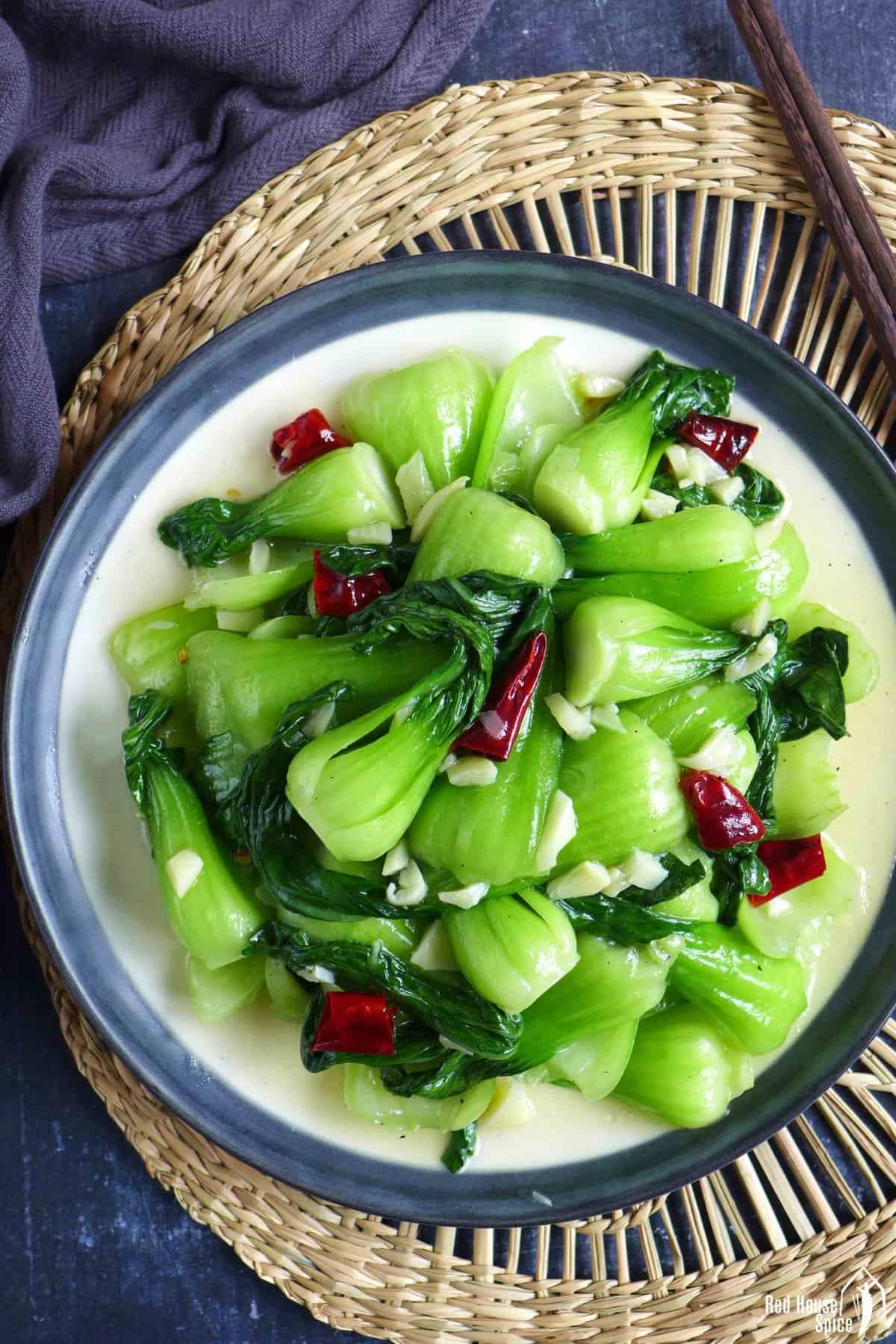
Bok choy is one of the most popular Asian greens that’s widely available outside Asia. Because of its versatile usage, I always have some in the fridge. Today’s recipe, bok choy stir-fry, is a great dish to showcase its natural flavour. And it only takes a few minutes to cook.
What is bok choy
Bok choy (aka pak choi, pok choi/小白菜) refers to a type of leafy vegetable that belongs to the cabbage and mustard family. It has loosely packed white or light green stalks and green or dark green leaves. It has an earthy “cabbage taste” with a hint of sweetness and a mild peppery undertone.
In Chinese cuisine, it isn’t consumed raw but can be cooked in several ways: blanched and added to noodles or a rice bowl dish, stir-fried on its own or with other vegetables or proteins (e.g. Braised Mushroom with Bok Choy), used in dumpling fillings, cooked in a hot pot, or added to soups.
Purchase and store
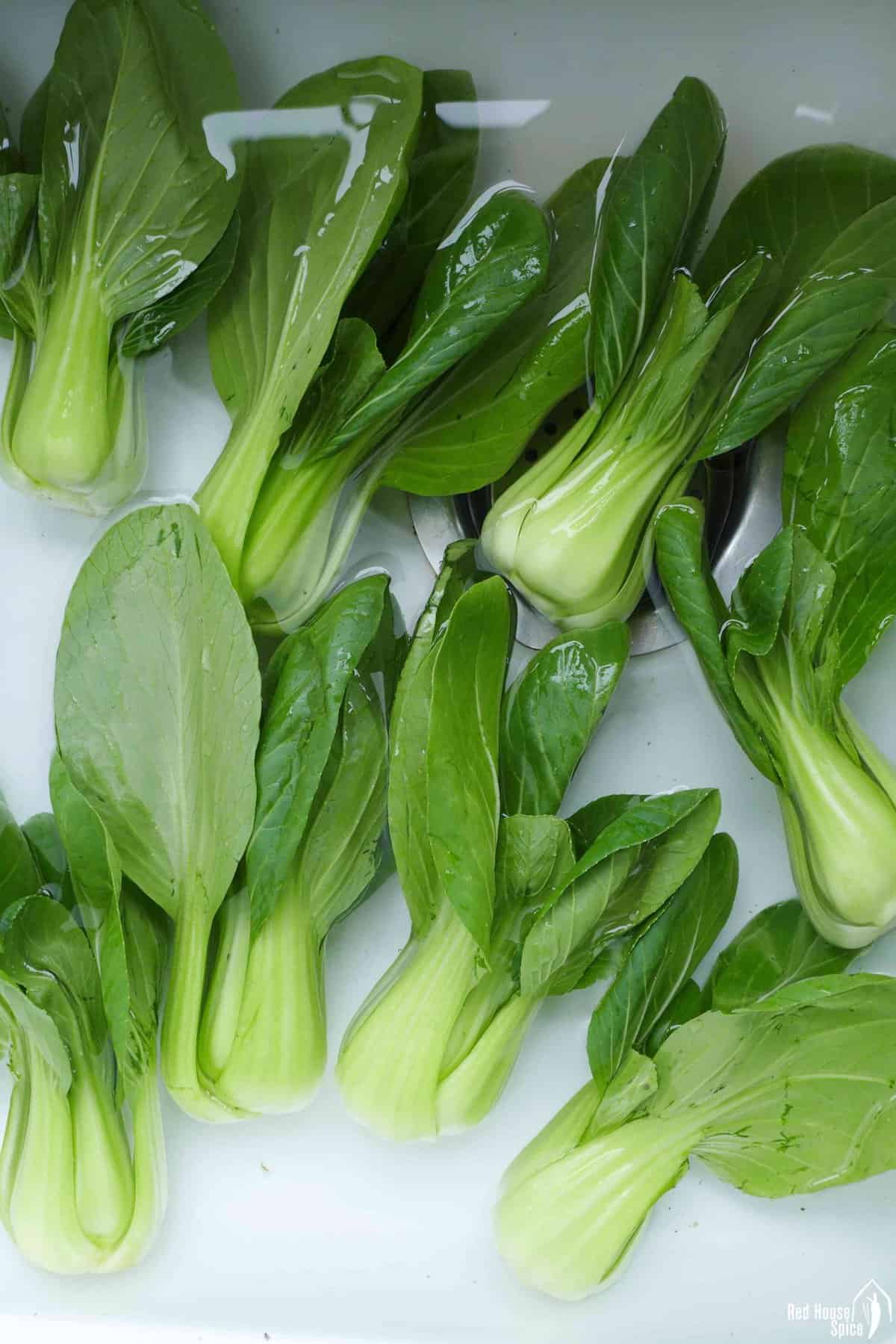
There are a few varieties of bok choy. They come in different sizes and their shapes vary a little. For stir-fries, my favourite is baby bok choy (aka Shanghai bok choy). It’s harvested when still young and thus has a tender texture. Other larger ones would work for this recipe too.
You should be able to find it in most Chinese/Asian stores. After purchasing, store it in the crisper drawer of the refrigerator without opening its packaging. If it’s quite fresh at the time of purchase, it should last another 3-4 days. If it’s left for too long, the bright green leaves will turn yellowish and the stem part becomes spongy instead of crunchy.
Top tips
Before explaining the cooking procedure, I’d like to point out a few key factors that will help you to get the best result when preparing this dish.
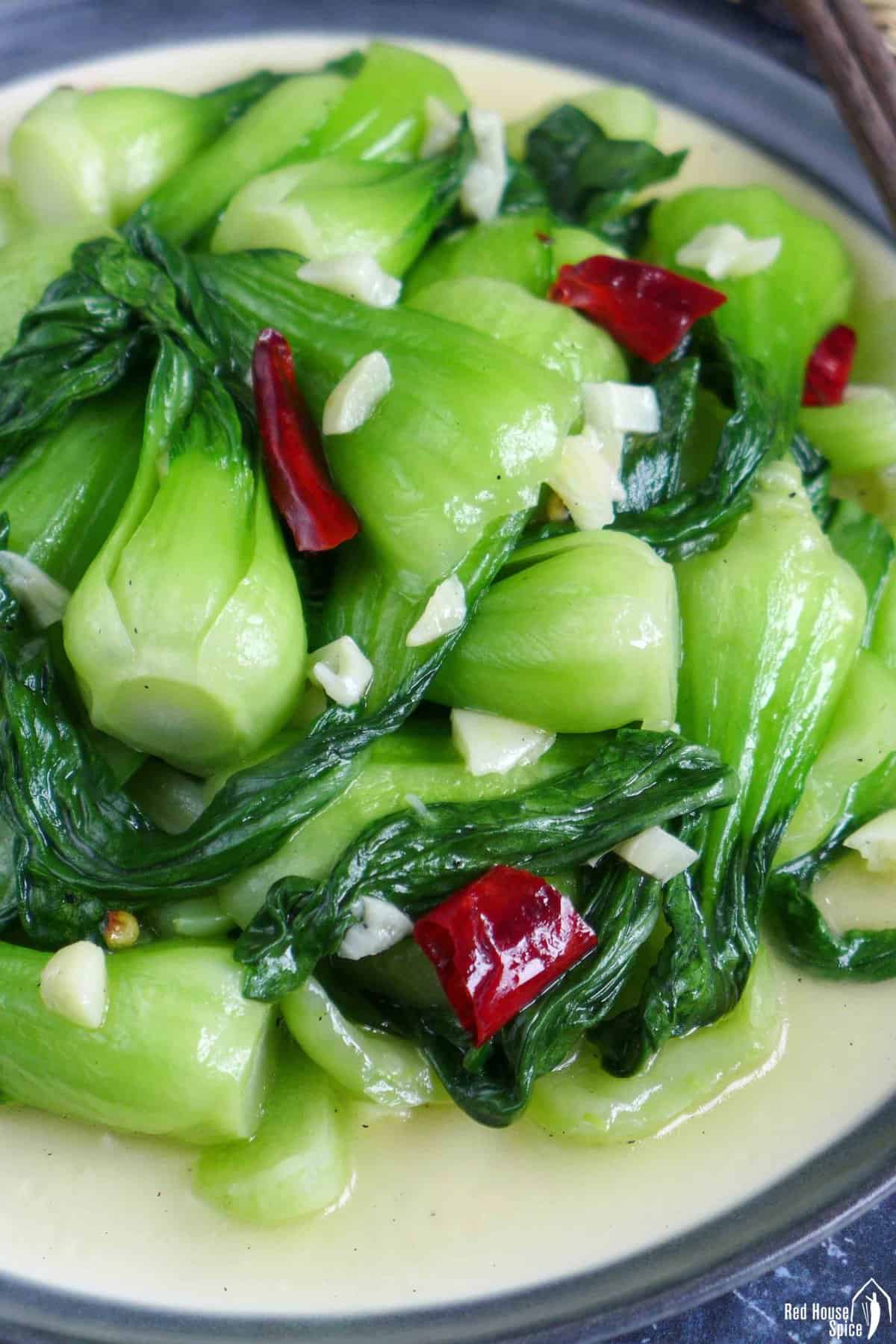
Keep the heat high
Retaining a high temperature is crucial when stir-frying leafy greens. This ensures a very short cooking time thus the healthy nutrients and the nice crunchy texture are retained to a maximum level.
Do not overcook
Overcooking will make your bok choy soggy and chewy, instead of being tender-crispy. Dish out when it seems a little undone. The remaining heat of the dish will cook it further before you enjoy it at the table.
Do not overcrowd
Unless you have a very powerful burner and a large wok, do not cook too much bok choy all at once. This will reduce the wok temperature too much. Also, this would make tossing more difficult thus you might fail to cook it evenly over a short time.
Use minimum seasoning
For this stir-fry, I prefer not to undermine the natural flavour of bok choy with heavy seasoning. Besides the aroma from garlic (replace it with ginger if you prefer), you only need a little salt and a pinch of sugar to balance out its mild bitterness.
Dried chilli is optional but I find it a great addition. A few pieces won’t make the dish very hot but they lend a gentle kick of heat and a smoky flavour.
Clean the bok choy
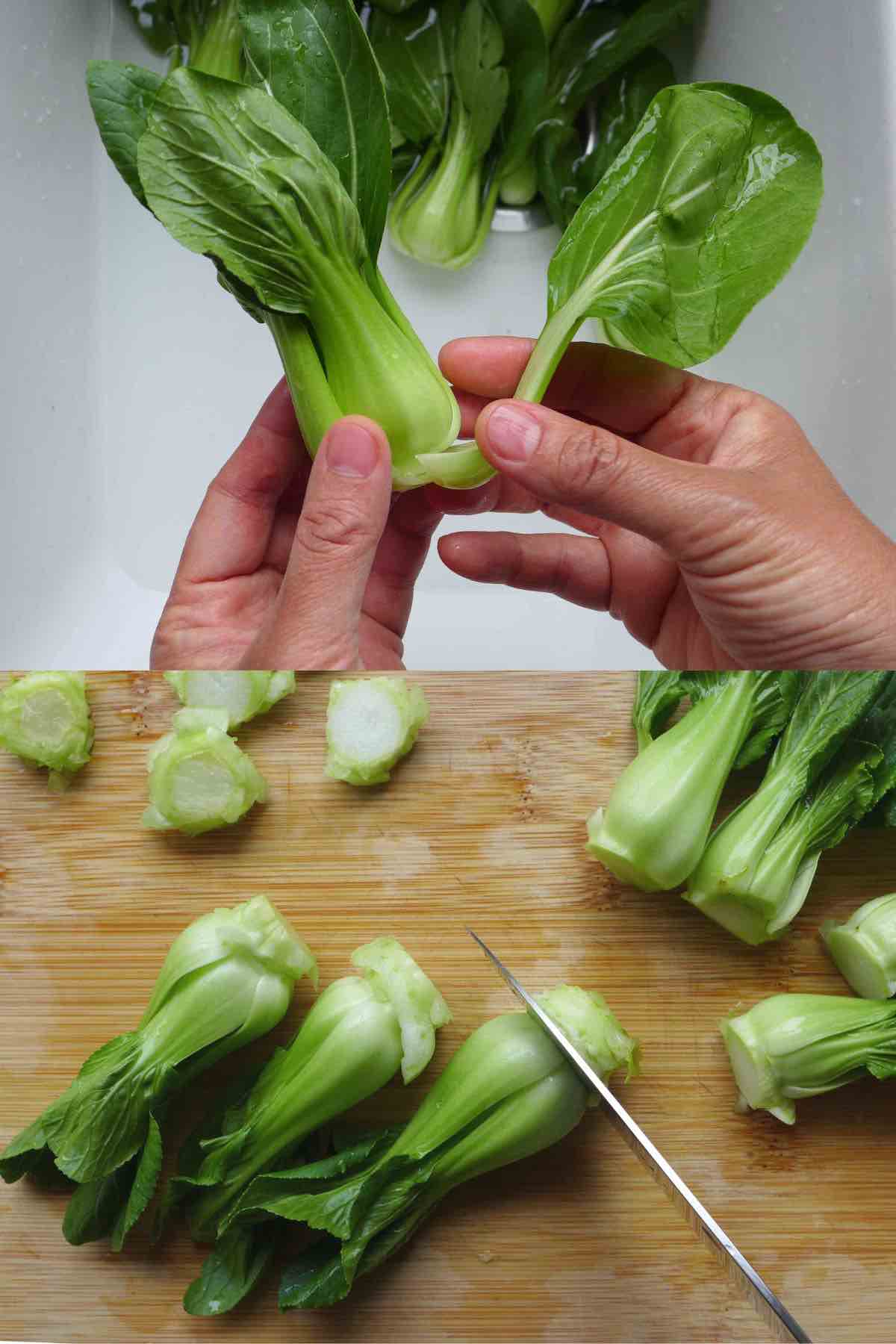
I usually start by soaking them in plenty of water for a few minutes. Then separate the leaves and rinse them one by one under running water to remove any remaining dirt.
The end part of the stems is often hard so trim off with a knife. If using baby bok choy, you can start cooking right away. If using large ones, half the stems lengthways to make them more chopstick-friendly.
Prepare the seasonings
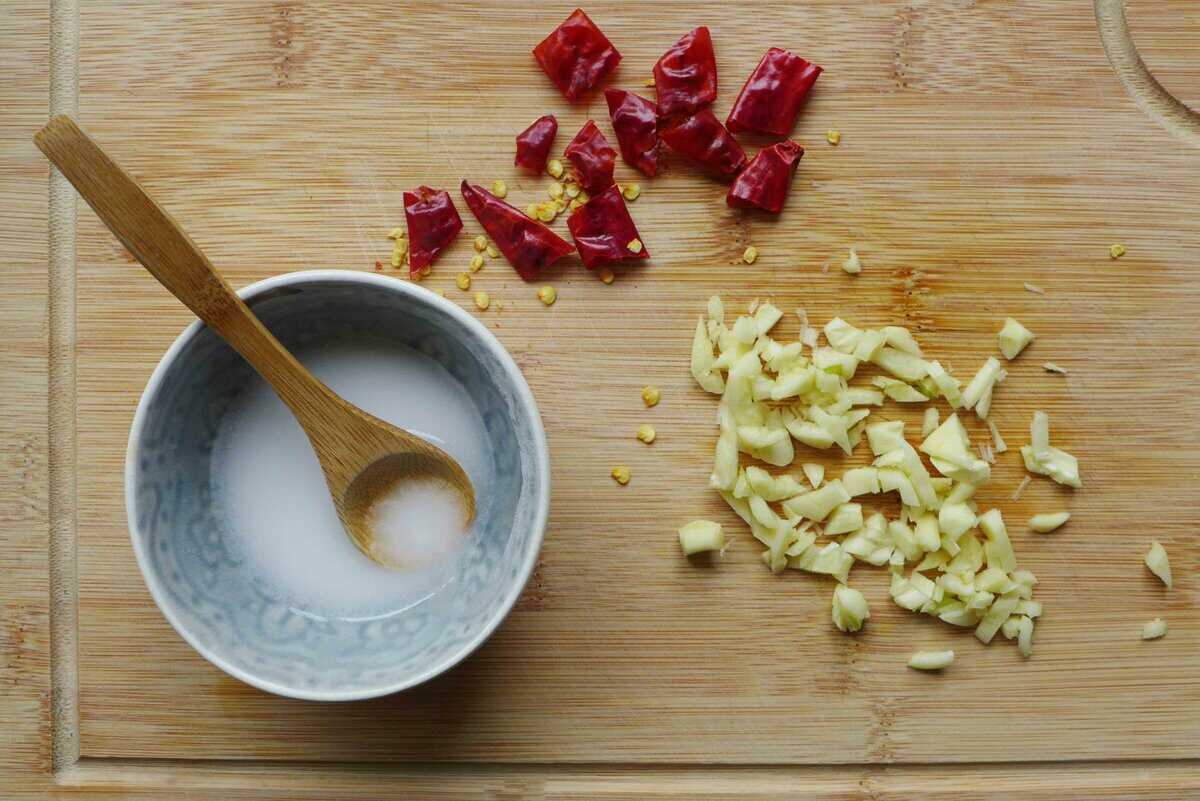
Use the side of a knife to crush the garlic cloves then coarsely chop them. Cut the dried chillies into sections.
In a small bowl, mix cornstarch, salt and sugar with water (make sure you do this before stir-frying).
Blanch the bok choy
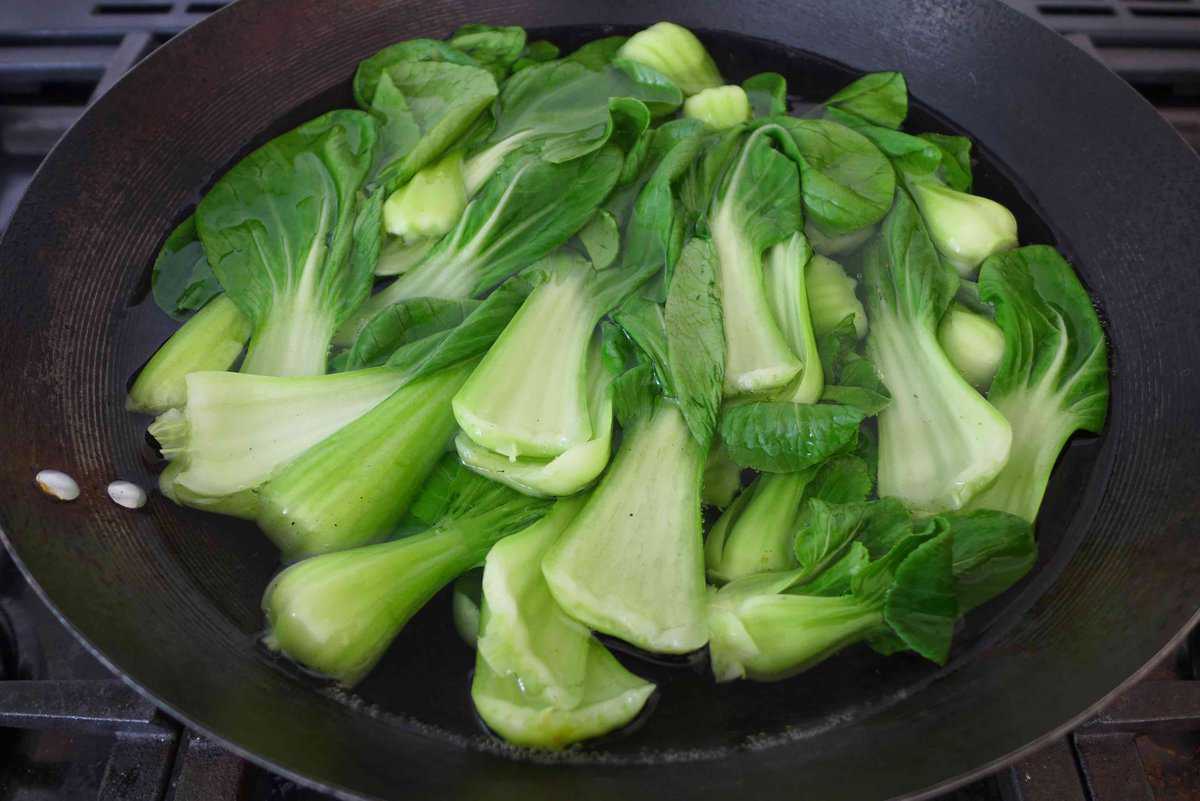
Bring plenty of water to a full boil then add some salt. Put in the bok choy. Leave it immersed in the water for 20 seconds if using baby bok choy or 30 seconds if using large ones. Fish out immediately when the time is up.
Make sure you don’t prolong the cooking time. At this stage, the bok choy is pliable (not as stiff and bulky as before) but the stem part remains crunchy.
🛎N.B. You could stir fry bok choy directly without blanching. But this extra step helps to achieve a better result (many restaurant chefs follow this procedure). This is particularly important if your burner isn’t quite powerful for quick stir-frying, or you plan to use a regular frying pan in the next step which isn’t practical for tossing bulky vegetables.
Stir-fry the dish
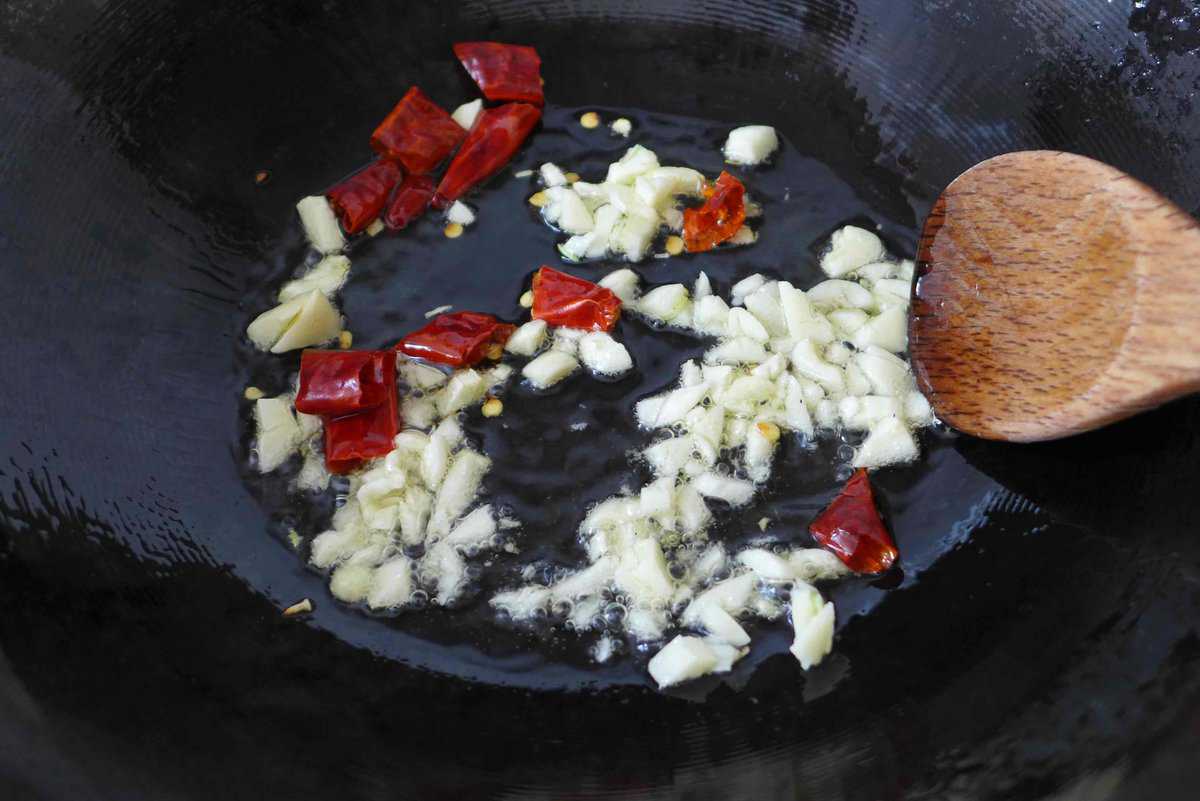
Add oil, garlic and dried chilli to a wok or large frying pan. Fry over high heat until the garlic starts sizzling intensively.
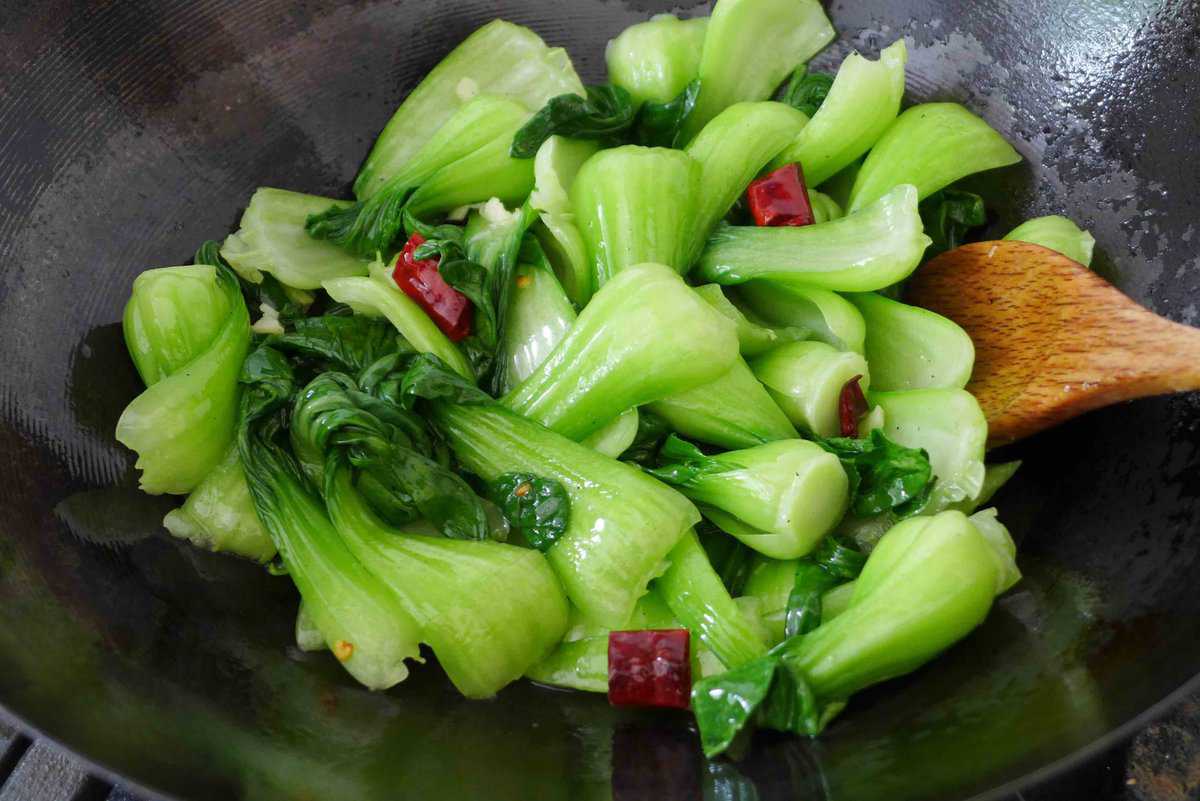
Add the blanched bok choy. Flip and toss constantly. Make sure to scoop up the garlic and chilli from the bottom otherwise they’ll burn easily.
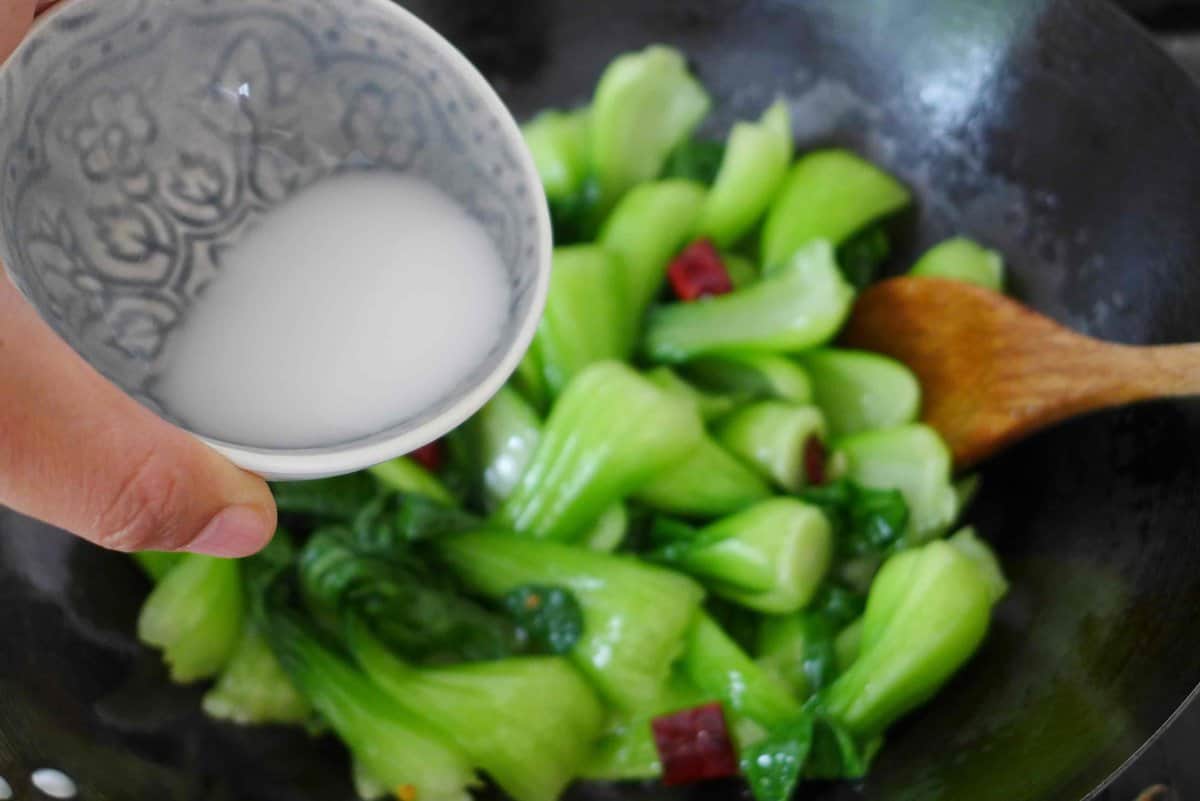
After 20 seconds or so when the bok choy is evenly heated, pour in the cornstarch slurry you prepared earlier (stir it well beforehand). Give everything a final stir and dish out immediately.
What to serve with
In Chinese households, stir-fried bok choy is usually paired with savoury protein dishes and accompanied by steamed rice. It also makes a great side dish to enjoy with other non-Chinese food. Here are a few recipes I often serve it with:
Cook other greens with this recipe
This recipe also applies to other green vegetables, such as spinach, Gai Lan (Chinese broccoli), Choy Sum, broccoli, asparagus, etc. Use the same method to cook and adjust the blanching time accordingly (e.g. the florets of broccoli take a little longer to cook).
A note on “ the restaurant flavour”
I’ve been asked by some readers why their stir-fries, particularly simple vegetable ones, don’t taste as good as what they have in restaurants. Here are some of the “secret” elements that make them taste or look different from home-cooked versions:
- The industrial gas burners in restaurants are much more powerful than home cookers. This helps to create a charred, smoky flavour.
- Restaurant chefs usually use much more oil which could result in a better taste.
- Lard, instead of regular cooking oil, is sometimes used in Chinese stir-fries. Many people find it more flavourful.
- Those dishes may have been seasoned with MSG (Monosodium Glutamate) which enhances the umami taste. Although a controversial ingredient in the past few decades, it has been proven to be perfectly safe when used in moderation.
Other vegetable dishes to try
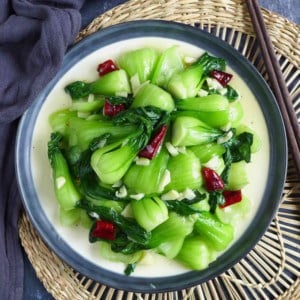
Bok Choy Stir-fry (蒜蓉小白菜)
Ingredients
For blanching
- 350 g bok choy - about 12oz
- ½ teaspoon salt
For seasoning
- 1 teaspoon cornstarch
- ¼ teaspoon salt
- ⅙ teaspoon sugar
For stir-frying
- 1 tablespoon neutral cooking oil
- 4 cloves garlic, coarsely chopped
- 3 dried chilli, cut into sections - optional
Instructions
Blanch
- Wash bok choy thoroughly. Trim off the hard ends and discard. Separate the leaves. If they are quite large, half each stem lengthways.
- Bring plenty of water in a wok/pot to a full boil. Add ½ teaspoon of salt then put in the bok choy. Leave to blanch for 20-30 seconds (depending on the size of the leaves). Drain immediately and set aside (do not overcook).
Stir-fry
- Before you start cooking, mix cornstarch, salt and sugar with 1 tablespoon of water.
- Add oil, garlic and dried chilli to a wok. Fry over high heat.
- Once the garlic starts to sizzle intensively, put in the drained bok choy. Flip and toss constantly for 20 seconds or so (make sure to retain high heat). Pour in the seasoning mixture (stir it well beforehand).
- Give it a final stir then dish out. Serve immediately with steamed rice and other savoury protein dishes.
NUTRITION
NUTRITION DISCLOSURE: Nutritional information on this website is provided as a courtesy to readers. It should be considered estimates. Please use your own brand nutritional values or your preferred nutrition calculator to double check against our estimates.


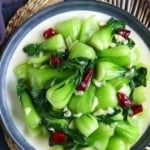
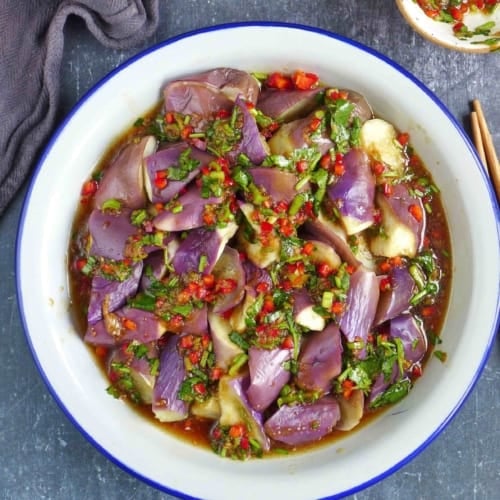
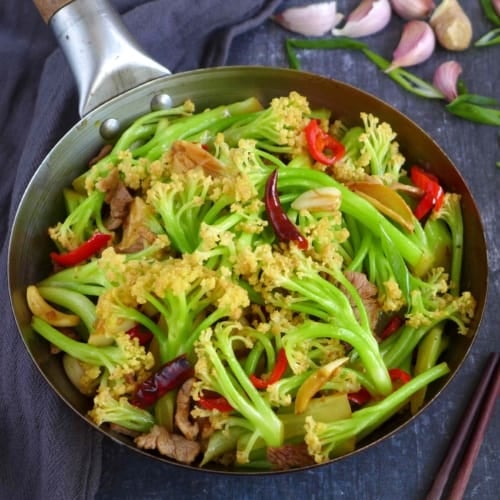
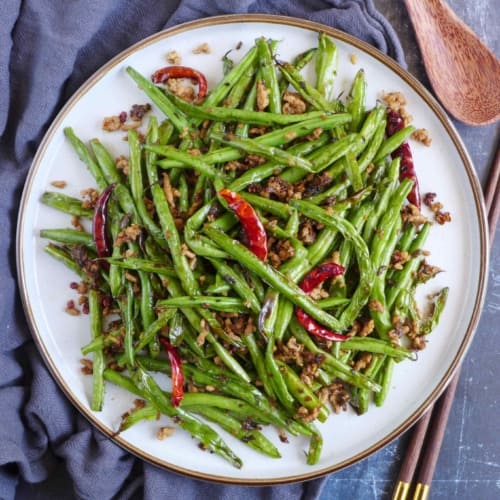
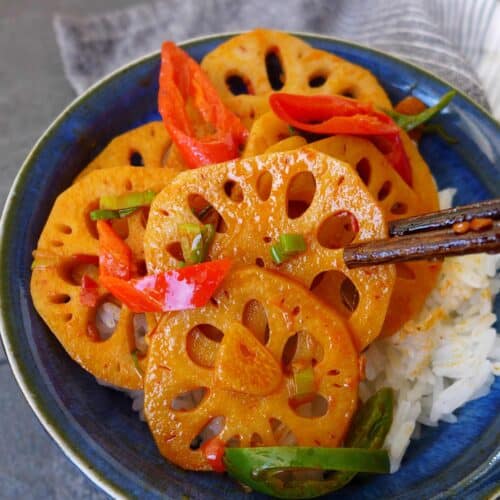
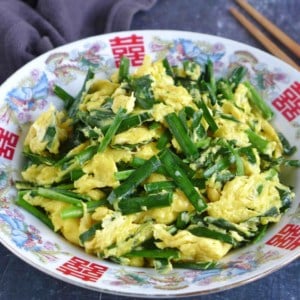
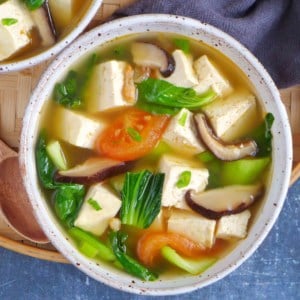
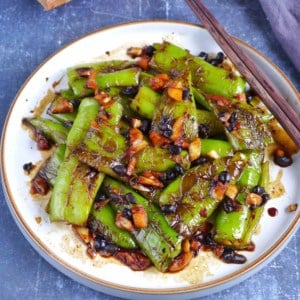
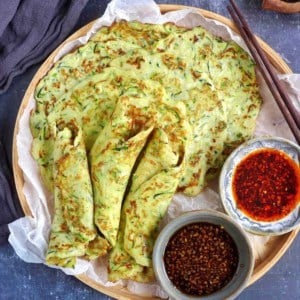
Hi, Wei Guo, on adding the cornstarch slurry, it congeals instantly. I add it, as mentioned, when the Bok Choi is really hot. Should the pan be off the fire when the corn starch is added?
Thank you
Sorry to hear that Krishna. It sounds like your burner was really powerful. Yes, removing the pan from the heat would definitely help. Also, you can try mix cornstarch with a little more water.
I love your simple receipt of bokchoy.😍
That’s wonderful to hear!
These are a remarkable recipes! Im glad that I found you on the internet! I enjoy eating chinese foods but never tried to cook it myself, now I am currently learning and your recipes helps me a lot. Thank you!
You’re welcome Mashiela! Wish you a fun time cooking Chinese food!